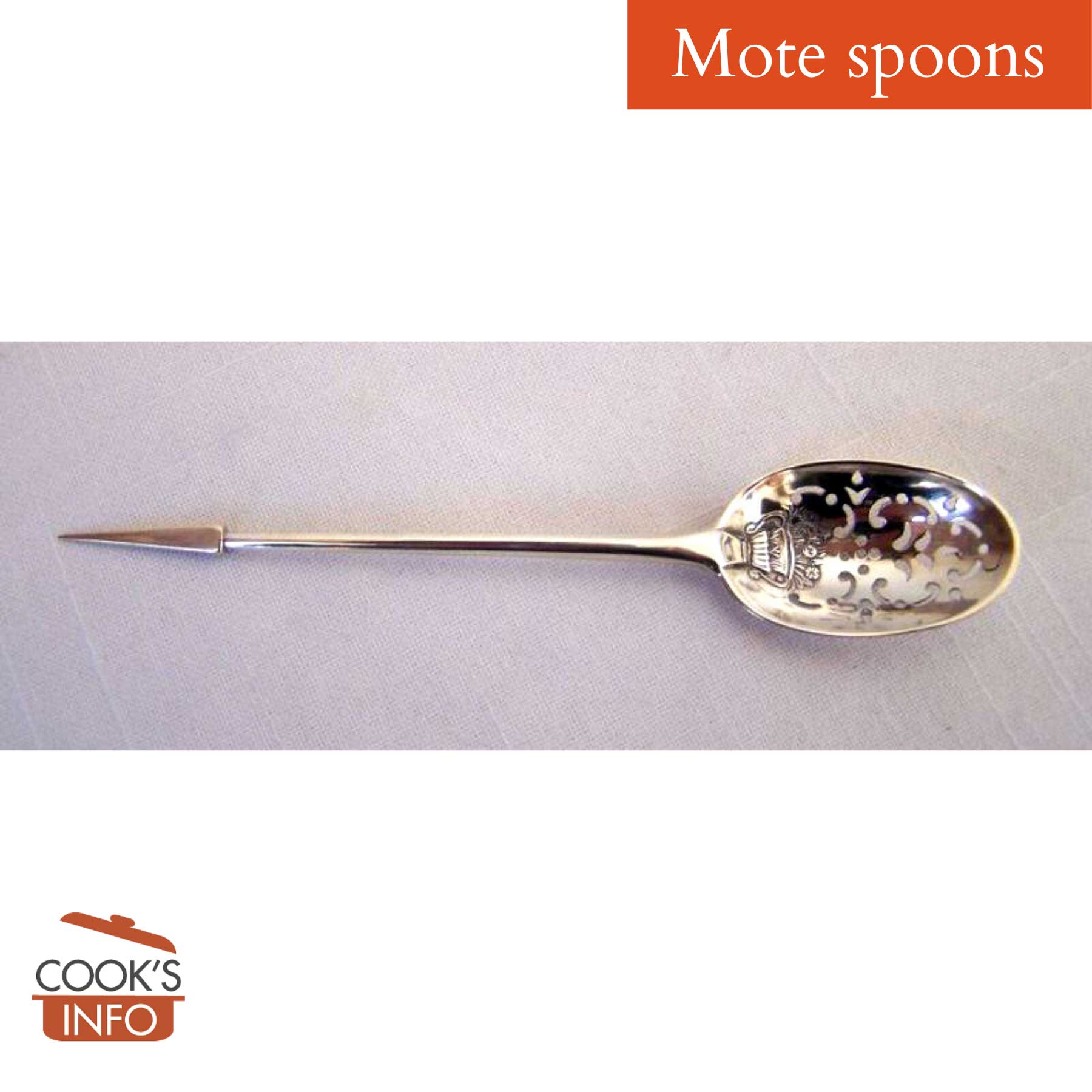
Mote spoon. SDC / wikimedia / 2009 / CC BY-SA 3.0
A mote spoon was a small slotted teaspoon to help with serving loose tea. It was used to fish out floating tea leaves from a cup.
Mote spoon design
The spoons were about 15 cm long (6 inches) altogether. The bowls of the spoon had perforations in them, ones that were usually decorative as well. Some perforations were cartouche or cross shaped, for instance.
The end of the handles of the spoons was also pointed, so that the spoon could be used to unclog the spout of a teapot clogged up with leaves.
They were usually sterling silver or gilt.
History Notes
Mote spoons were made starting in the late 1600s in the UK, and in the first half of the 1700s in America. The holes were drawn on the bowl of the spoon by the silversmith. A small hole would be drilled into a marking, then a very small saw blade pulled through, then the hole sawed out. Even fairly plain ones could take four days to make (versus one day for a regular teaspoon.)
Literature and Lore
Most people who have heard the word “mote” will have heard it from a Biblical context:
3 Why beholdest thou the mote that is in thy brother’s eye, but considerest not the beam that is in thine own eye?
4 Or how wilt thou say to thy brother, Let me pull out the mote out of thine eye; and, behold, a beam is in thine own eye?
5 Thou hypocrite, first cast out the beam out of thine own eye; and then shalt thou see clearly to cast out the mote out of thy brother’s eye.
— Matthew 7:1–5 KJV
Language Notes
A “mote” is a tiny piece of something.

